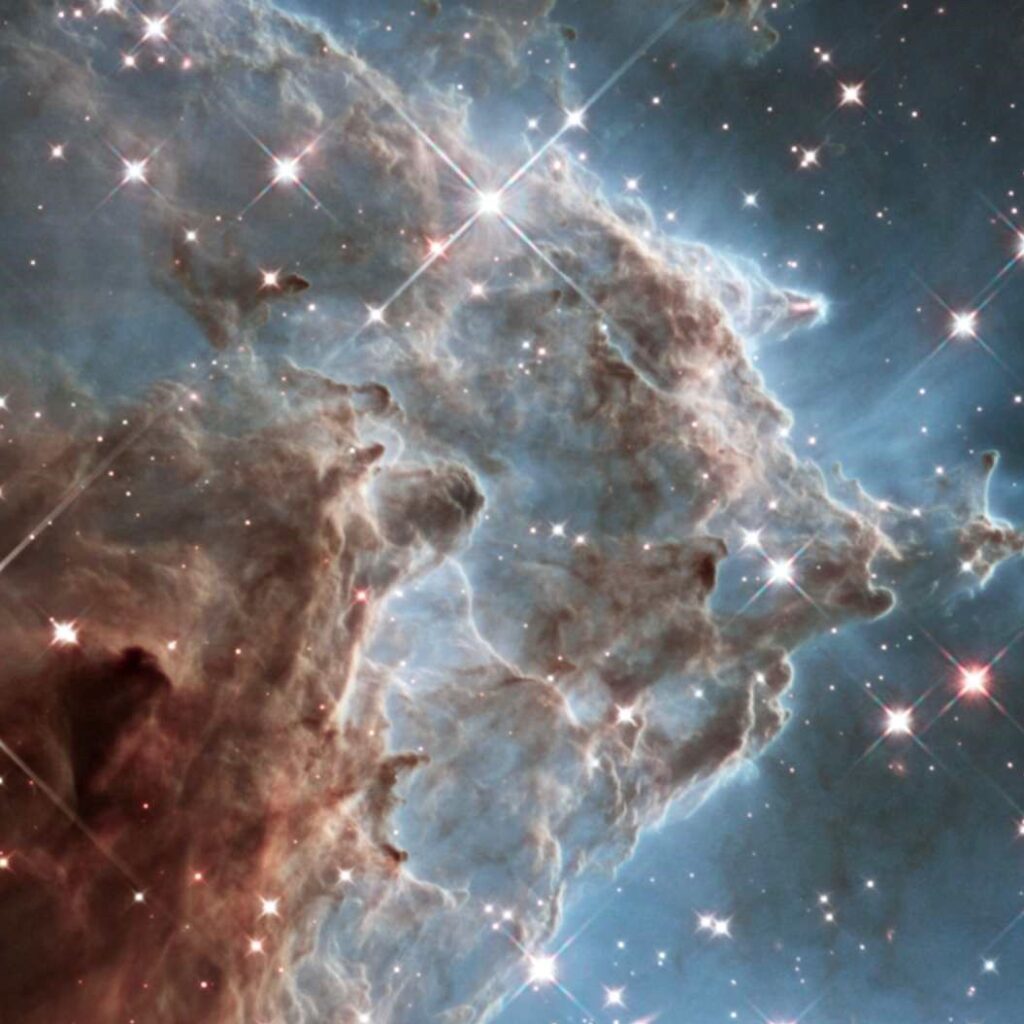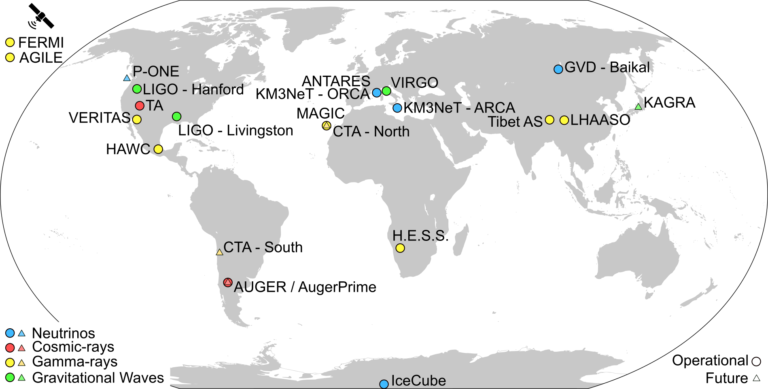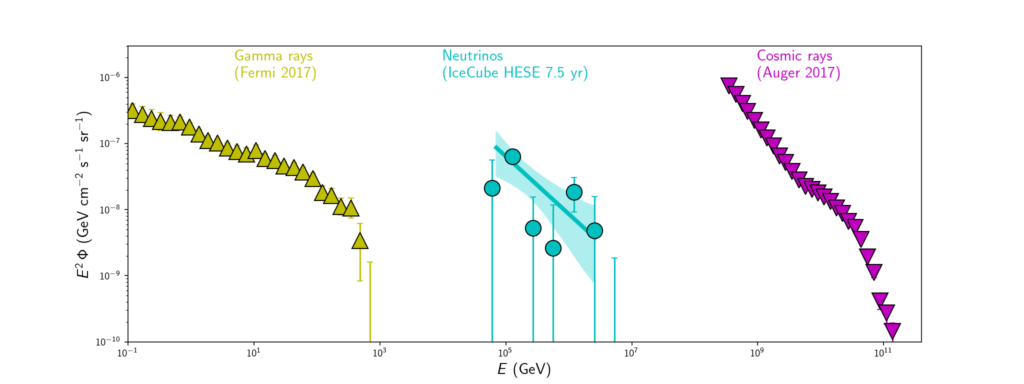Research

Neutrino Astrophysics
Neutrino astrophysics is a branch of physics that studies the most-energetic phenomena in the Universe through the observation of neutrinos of cosmic origin. In this regard, neutrinos can provide unique insights on the production and acceleration processes in the sources, even if they are very distant or obscure objects.
Astronomy has been traditionally done with electromagnetic observations. However, at very-high-energies (> TeV) photons (gamma-rays) get absorbed after the interaction with the extragalactic background light, therefore reducing the observation range. For instance, at hundreds of TeV only sources in the Milky Way can be detected. Neutrinos, on the contrary, can travel unabsorbed from long distances.

Figure 1: Distribution of the main observatories of different messengers around the globe.

Figure 2: Observed fluxes at the highest energies of gamma ray, neutrino and cosmic rays.
Probing the connection among those messengers is not trivial, but combining their inputs significantly increases the discovery potential. This is what transient analyses can achieve, by adding the time constraint to their potential correlation. During the following decade many experiments will coordinate their observations in real time, likely achieving the discovery of the first high energy neutrino source.
Today we are in the Multi-messenger era.
[1] “Multimessenger Astronomy with Neutrinos”, Francisco Salesa Greus and Agustín Sánchez Losa, Universe 2021, 7(11), 397. DOI:10.3390/universe7110397 [arXiv:2110.11817]
[2] “Science with Neutrino Telescopes in Spain”, J.J. Hernández-Rey et. al., Universe 2022, 8(2), 89. DOI:10.3390/universe8020089
